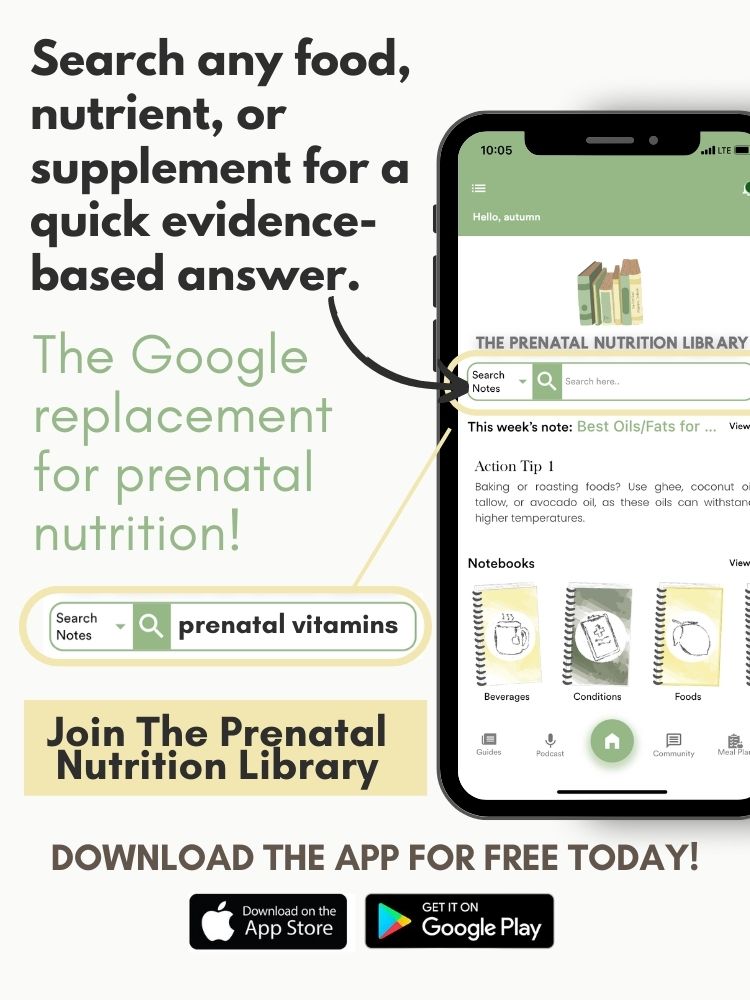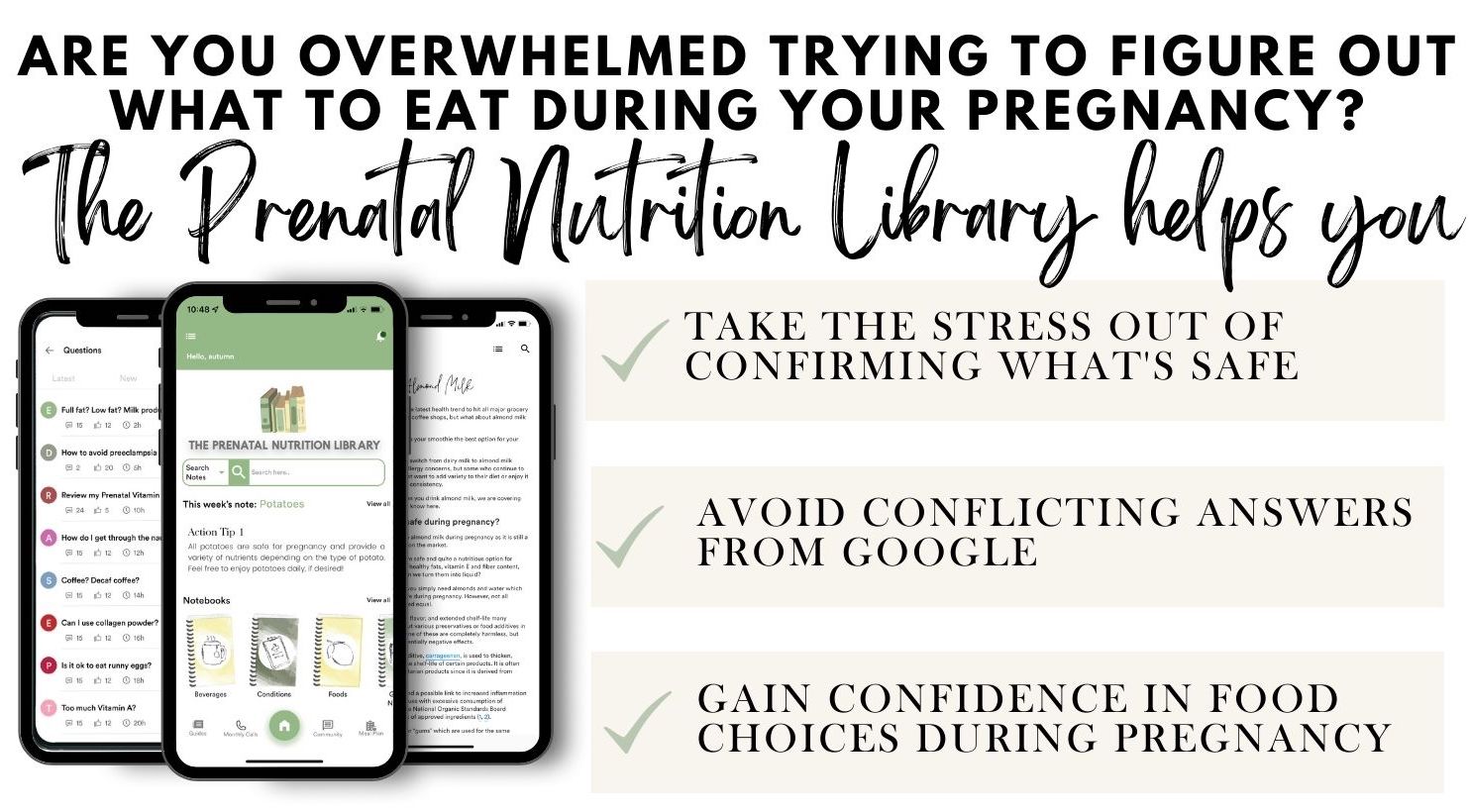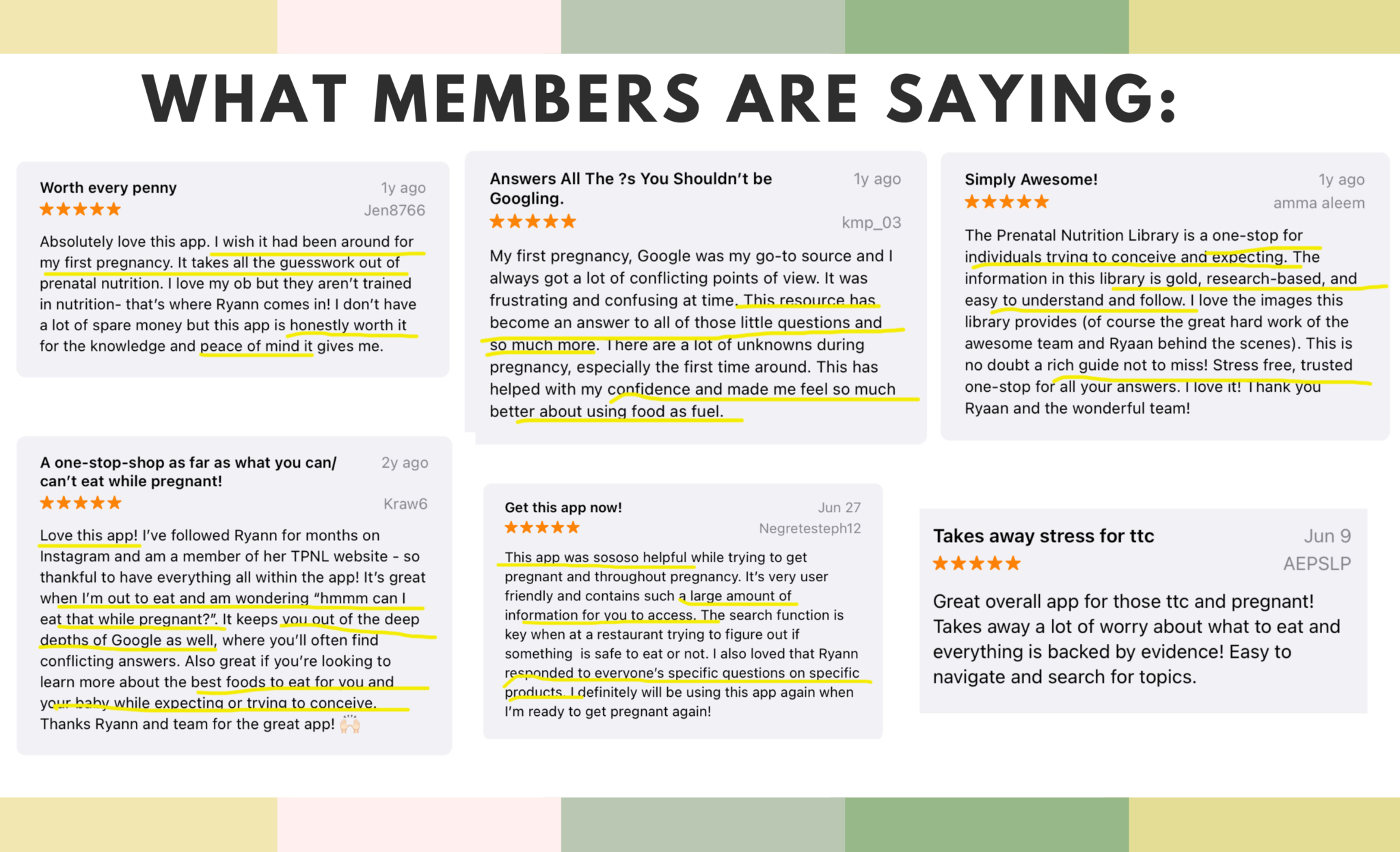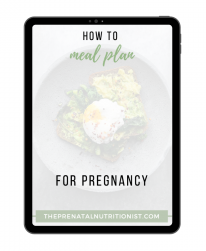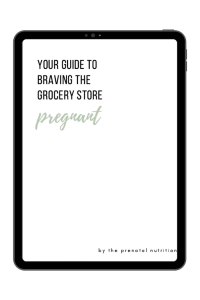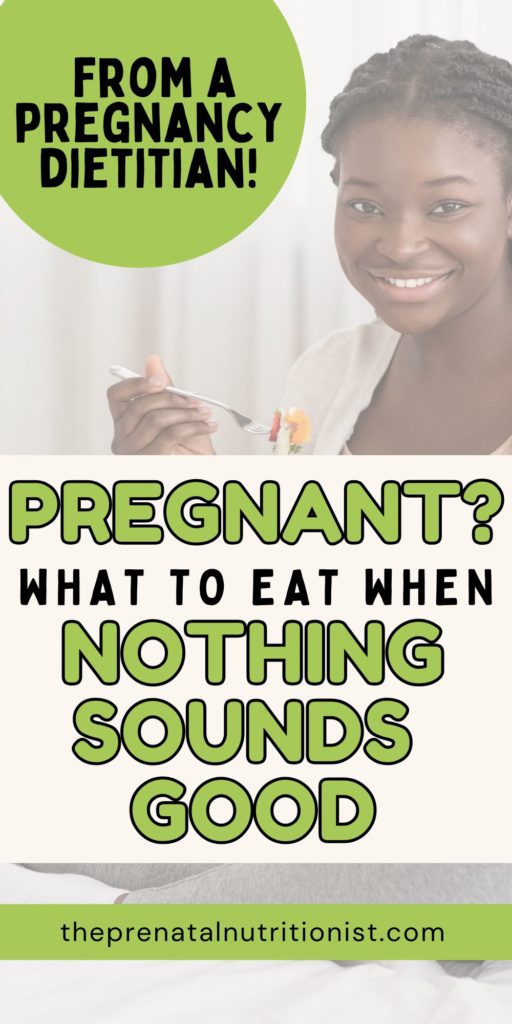
In that stage of pregnancy where nothing sounds appetizing? You’re not alone.
Pregnancy brings on many changes—your body, emotions, daily rhythms, and, yes, your relationship with food. Food aversions and appetite shifts are among the most frustrating symptoms for many people. One minute, you’re starving, and the next, you’re completely turned off by your favorite meal. Add in nausea and the non-stop noise about the “dos” and “don’ts” of pregnancy nutrition…it’s no wonder food feels overwhelming.
As a prenatal registered dietitian, I know how overwhelming this part can feel. You’re doing your best to nourish your body and your growing baby, but how can you do that when no food sounds good? Here’s some good news: there’s no such thing as the perfect pregnancy diet. However, there are ways to boost your nutrient intake, even on those days when you have no appetite.
That’s exactly what this guide is for! I’m sharing tips on what to eat on those tricky “no-appetite days” and how to make it pregnancy-exhaustion friendly. They’re easy to prep and sneak in good-for-you ingredients. You won’t have to spend another minute overthinking it.
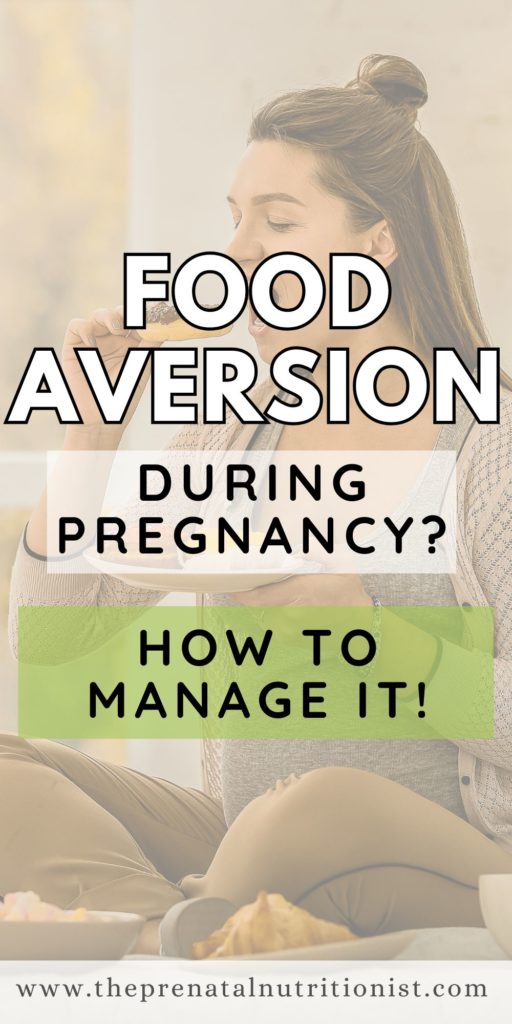
What To Eat When Nothing Sounds Good: Prenatal Edition
You’re not alone if you’re pregnant and nothing sounds good to eat. One minute you’re hungry, the next the smell or thought of food is enough to turn your stomach. Whether you’re dealing with morning sickness or new food aversions or just that frustrating “meh” feeling toward everything in the fridge, this experience is incredibly common during pregnancy.
This blog post breaks down what’s behind that “nothing sounds good” feeling. We’ll look at what causes food aversions during pregnancy, when they typically show up, and, most importantly, what you can eat to get the nutrients you need even on the toughest days. From bland snacks to gentle meals, you’ll find practical, easy-to-digest options to help you feel more well-fueled and nourished.
What Is a Food Aversion In Pregnancy?
So, what are food aversions during pregnancy? Basically, it’s when you suddenly dislike or can’t stand the sight, taste, or smell of certain foods—even if you loved them before. It’s driven by physiological and hormonal changes that affect your sense of smell, taste, and digestion.
Hormonal shifts, particularly rising levels of estrogen and hCG, can change how you experience smells and flavors. What was once your favorite dish may now be a no-go when you see or smell it. Food aversions often overlap with morning sickness, but don’t always go away when nausea does.
Food aversions can significantly impact your nutritional intake, altering your usual hunger cues entirely. If entire food groups suddenly make your stomach turn, keeping up with a balanced diet can be much harder. Please remember, it’s 1000% okay to eat what you can keep down. The foods you ate before pregnancy, your nutrient stores, and a comprehensive prenatal vitamin help provide backup when nothing sounds good.
Get our prenatal vitamin guide in The Prenatal Nutrition Library App so you feel confident that what you take daily is safe and effective!
With that said, there are some foods you can try to boost nutrient intake and help meet your nutrient needs to support your baby’s growth and development.
Also, check out: “Nothing Sounds Good to Eat: Pregnancy-Friendly Ideas.”
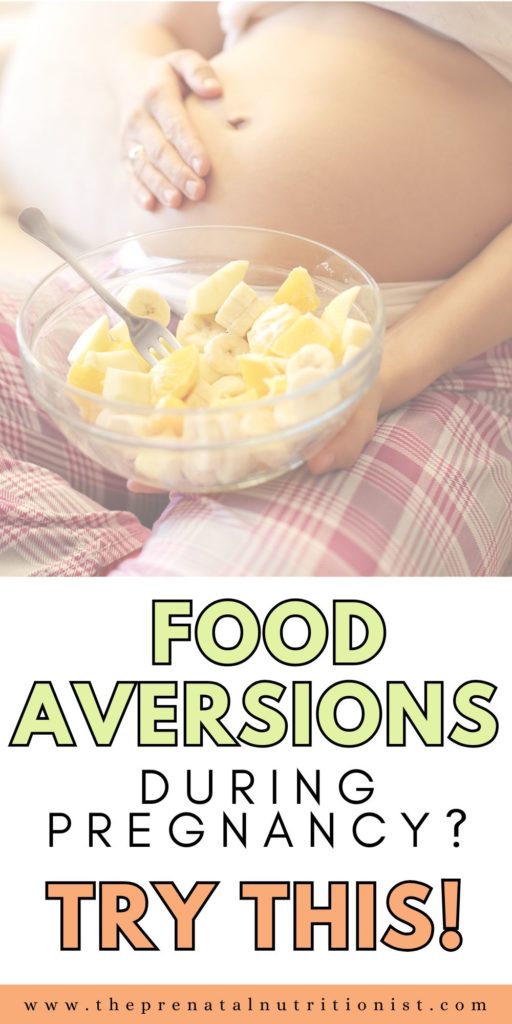
When Do Food Aversions Start In Pregnancy?
Food aversions can appear at any time, often unexpectedly. However, most people start to notice them in the first trimester, typically around week 5 or 6. For many, food aversions fade by the end of the first trimester. However, many women have one or two aversions that stick around through the entirety of pregnancy.
Planning meals can feel overwhelming when they hang around a little longer than expected. However, remember that your body is resilient, and we’re here to help. If your aversions are severe and it’s a struggle to get any food down, I encourage you to talk to your regular healthcare provider for support.
This might also help: “Morning Misery: How to Combat Morning Sickness”

What To Eat When You’re Pregnant And Nothing Sounds Good
If you’re hungry but nothing sounds good, here’s a list of often well-tolerated options that can also help boost nutrient intake. Think of these as building blocks to get in your essential nutrients, even when you feel like nothing sounds good.
Smoothies
Smoothies can truly be a lifesaver when it’s time to eat, but absolutely nothing sounds good to eat. They’re cold and easy to digest and sip on. This helps when smells or certain textures feel overwhelming. Blending fruit, yogurt, nut butter, and a splash of milk gives you quality fats, protein, and fiber to keep your energy up and support your baby’s growth.
Need a few good smoothie recipes? Check out: “Fruit Smoothie Recipes for Pregnancy”, “Best Green Smoothies for Pregnancy”, and my “Sunrise Smoothie” recipe.
Crackers and Cheese
Bland foods are sometimes the only thing that won’t trigger nausea or aversions when you can’t decide what to eat. Whole-grain crackers paired with cheese are a convenient snack to grab. Together, they offer protein, fat, and carbohydrates. When you can, add some fresh fruit for fiber and to create a mini-meal.
Toast with Nut Butter
Plain toast is often unlikely to upset your sensitive stomach. Topping it with your favorite nut butter adds a small boost of protein and fats, keeping you fuller longer. If you can handle it, a few slices of banana can be nice, too. They’re adding a bit of fiber and potassium. Bananas are also a good source of vitamin B6, which has been proven to help curb nausea.
This might also help: “Foods That Help With Pregnancy Nausea.”
Eggs
If eggs aren’t one of your pregnancy aversions, they can be a wonderful, nutrient-dense option for low-appetite moments. They’re packed with choline, which is especially important for baby’s brain development. Try them hard-boiled, scrambled, or in a simple omelet. And, if you can stomach it, toss in a handful of greens for an extra boost.
Buttered Pasta
When nothing sounds appealing, plain pasta is often the most tolerable choice. A small bowl of plain rice or pasta with butter can give you easy-to-digest energy. The butter adds fat for extra calories and promotes satiety.
Soup
Soup can be warming, hydrating, and easy to get down when full meals feel impossible. Test the waters with a warm bowl of chicken soup, bone broth, or mild miso soup. These options provide nourishment without being overwhelming. Sipping slowly is great for getting some nutrients and fluids.
Yogurt
Cold foods are often much more palatable if you’re struggling with morning sickness or food aversions. Yogurt is a great choice. It’s smooth, cool, and packed with calcium, protein, and probiotics that support digestion. You can even top it with fruit or nut butter for added flavor and nutrition.
Fruit
Sometimes, heavy meals can feel like a little too much. But fresh fruit can be a nice, refreshing snack that’s easy to tolerate. Options like bananas, berries, watermelon, oranges, and even apple sauce are gentle on the stomach and naturally hydrating. Plus, fruit gives you essential nutrients mixed with a sweetness that can feel like a pick-me-up on rough days.
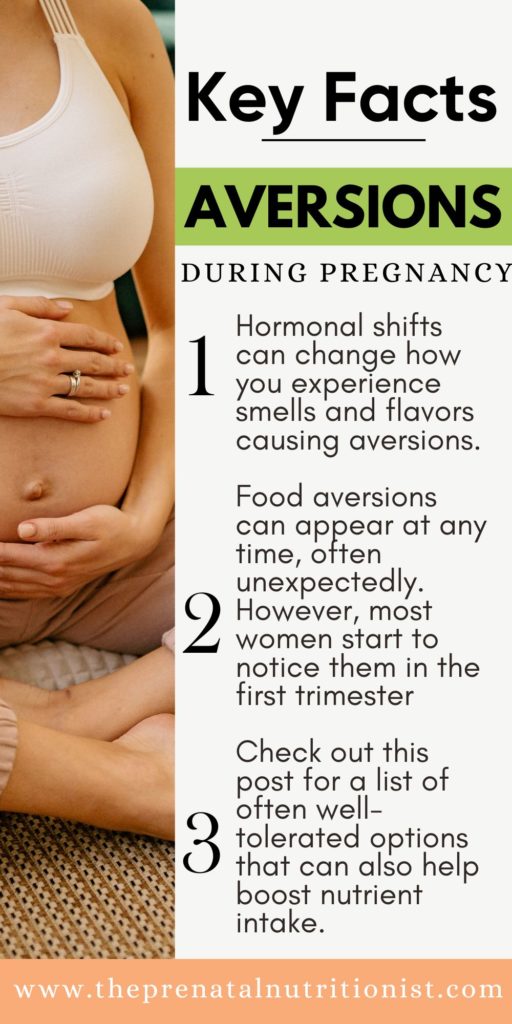
Food aversions during pregnancy are common!
You’re not alone if you’re feeling hungry, but nothing sounds good during pregnancy. This is a common phase of pregnancy, but the good news is that it is usually temporary. Listen to your body and eat what you can keep down. Try out different foods, like those listed above, to find what works best for you.
For more strategies and solutions to combat common pregnancy symptoms, join The Prenatal Nutrition Library App. We offer meal plans, helpful supplement guidance, and nutrition strategies to help ensure you and your baby are well-nourished.
You’ll have complete peace of mind with clear, actionable guidance to support a healthy journey from trying to conceive to postpartum.
Nourishing for two is different than nourishing for one, and you deserve helpful, realistic guidance grounded in science. Take a deep breath, trust your body, and sign up today for the support you deserve.

